The Wandering Jew Plant, scientifically known as Tradescantia, is a popular and vibrant houseplant. It’s renowned for its rapid growth and striking variegated leaves. This introduction will delve into key aspects of its care: propagation methods, ideal growing conditions, and essential maintenance tips.
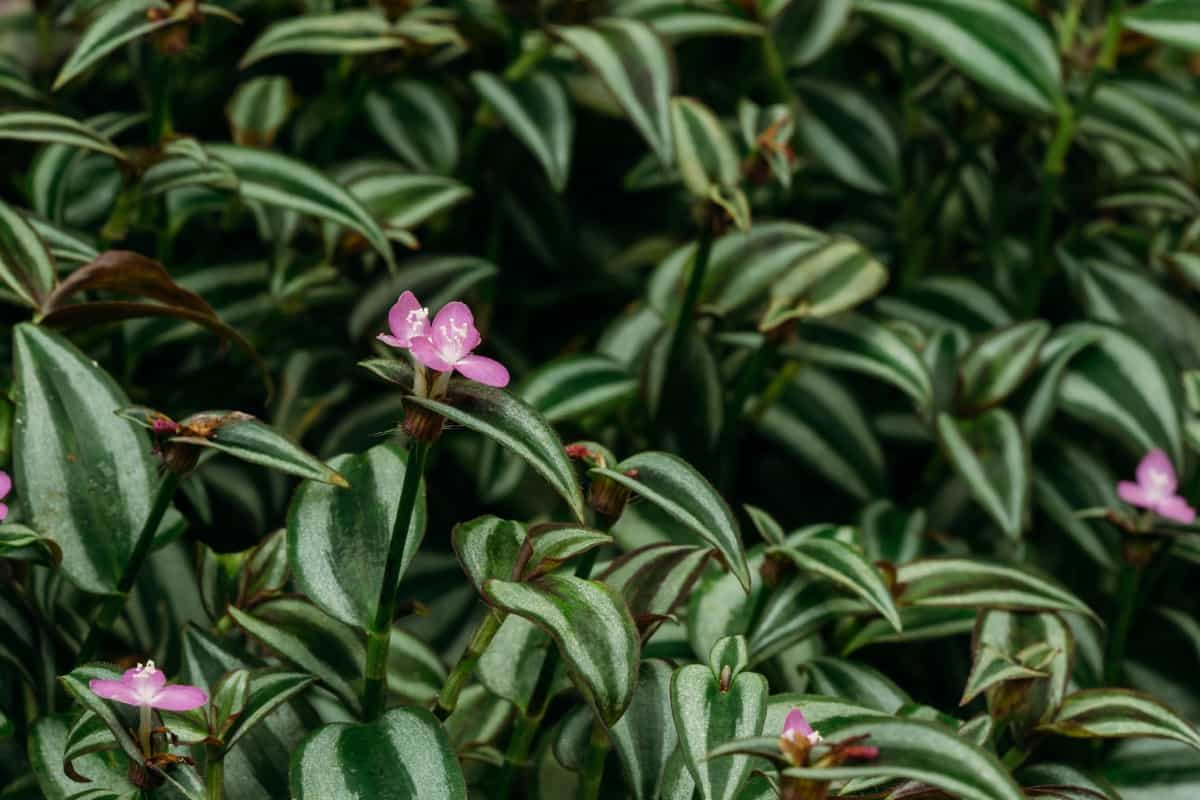
We’ll explore efficient propagation techniques, optimal environmental settings for robust growth, and practical care advice to maintain its vibrant beauty. This comprehensive guide aims to equip plant enthusiasts with the knowledge to cultivate and nurture the Wandering Jew Plant successfully.
Introduction to Wandering Jew Plant
Wandering Jew plant is a common name for several species of plants in the genus Tradescantia, which are native to South and Central America. They are also known as “wandering dudes” or “inch plants.” The Wandering Jew Plant, known scientifically as Tradescantia zebrina, is a captivating and low-maintenance houseplant, perfect for beginners. It is a native of Mexico and Central America, and although indoor blooming is uncommon, it stands out for its zebra-patterned leaves. They are popular houseplants because of their colorful foliage, trailing stems, and easy care.
Common Varieties of the Wandering Jew Plant
The Inch Plant, with over 70 varieties, is a diverse and visually stunning group. Tradescantia fluminensis is known for its white and green variegated, ovate leaves and white triangular flowers. Tradescantia zebrina, famous for its zebra-like stripes and purplish-green leaves with a silver edge, is one of the most robust and fastest-growing types. Tradescantia pallida, or Purple heart, stands out with its deep purple foliage and light purplish-pink flowers.
Tradescantia blossfeldiana features thick, fuzzy green leaves with variegation and vibrant flowers. Tradescantia Sillamontana has symmetrical, white fuzzy leaves and magenta flowers, while Tradescantia spathacea, known as ‘moses in a blanket’, boasts dark green leaves with a purple underside in spiral formations. Each variety brings its unique charm, making them versatile for either ground cover or hanging displays.
In case you missed it: Everything You Need to Know About Punganuru Cows: Origin, Characteristics, Temperament, and Breeding
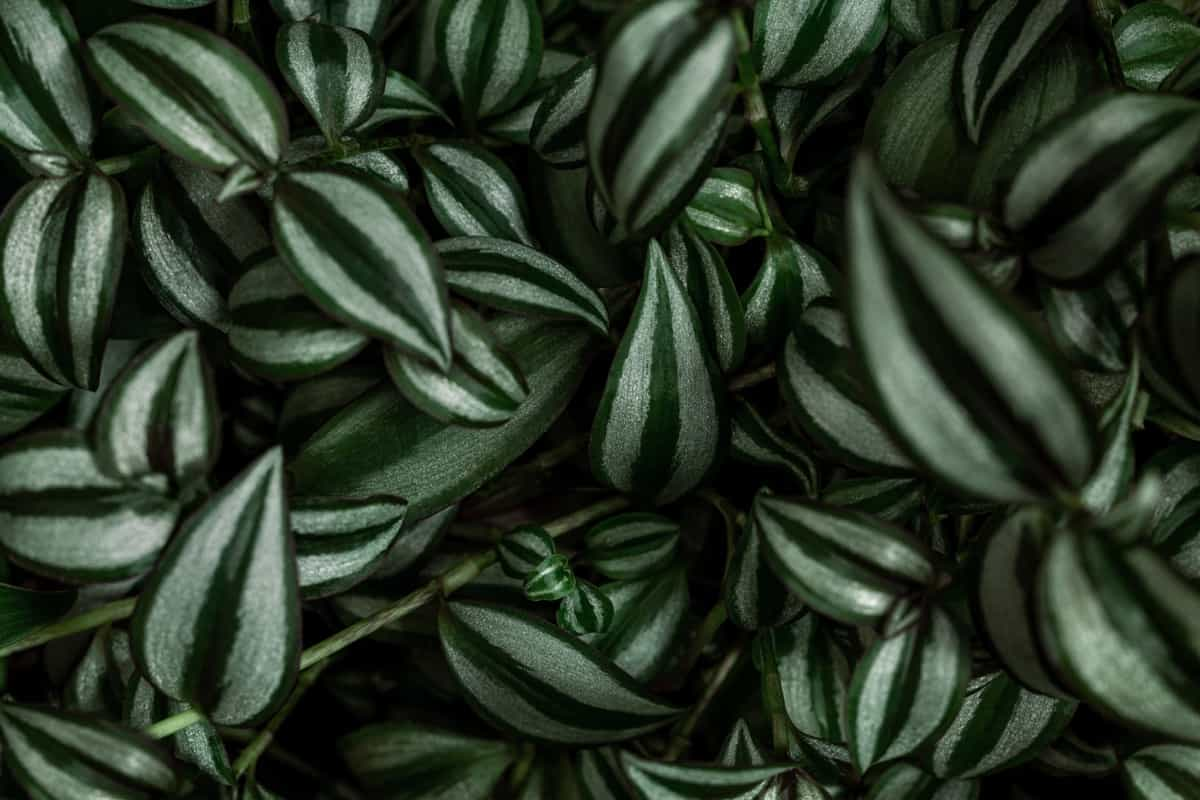
Quick Facts
- Species: Tradescantia zebrina
- Family: Commelinaceae
- Growth Pattern: Trailing/Creeping
- Height and Width: Up to 6.0 ft (1.8 m) in height and 2.0 ft (0.6 m) in width
- Soil Requirements: Well-draining, rich in organic matter
- Watering Frequency: Every 7-14 days
- Light Requirements: Bright, indirect light
- Optimal Temperature Range: 60.0 – 80.0°F (15.6 – 26.7°C)
- Humidity Preferences: 40.0 – 60.0%
- Fertilization Schedule: Monthly during growing seasons
- Propagation Method: Stem cuttings
- Toxicity: Non-toxic
Growing Tradescantia Zebrina
Tradescantia zebrina flourishes in environments that mimic its native tropical habitat. It prefers bright, indirect sunlight, which promotes vibrant leaf coloration and growth. Direct sunlight can scorch its leaves, while too little light may cause loss of variegation The ideal soil for Tradescantia zebrina is a well-draining mix rich in organic matter. This ensures adequate moisture retention without waterlogging, which can lead to root rot. A standard potting mix can be improved with perlite or orchid bark to increase drainage.
When it comes to watering, the key is balance. The soil should be kept slightly moist but not waterlogged. Over-watering can cause root rot, while under-watering will lead to limp leaves. During the winter months, reduce watering frequency as the plant enters a dormant phase. Temperature and humidity are also crucial for this tropical plant. It thrives in average room temperatures and enjoys a humidity level of about 40-60%. If your home is dry, especially in winter, use a humidifier or place a water tray near the plant.
Wandering Jew Plant Characteristics
Wandering jew plants are perennial plants that grow as vines or groundcovers. They have fleshy stems that can root at the nodes when they touch the soil. They have oval or lance-shaped leaves that are arranged alternately along the stems. They have small, three-petaled flowers that are usually white, pink, or purple.
Lighting Requirements for Wandering Jew Plant
Wandering jew plants need bright, indirect sunlight to thrive. They can tolerate direct sun in the morning or evening, but too much sun can scorch their leaves and fade their colors. They can also grow in low-light conditions, but their growth will be slower, and their colors will be less vibrant.
In case you missed it: Everything You Want to Know About Mahindra Oja Tractor: Features, Specifications, Price for Different Models
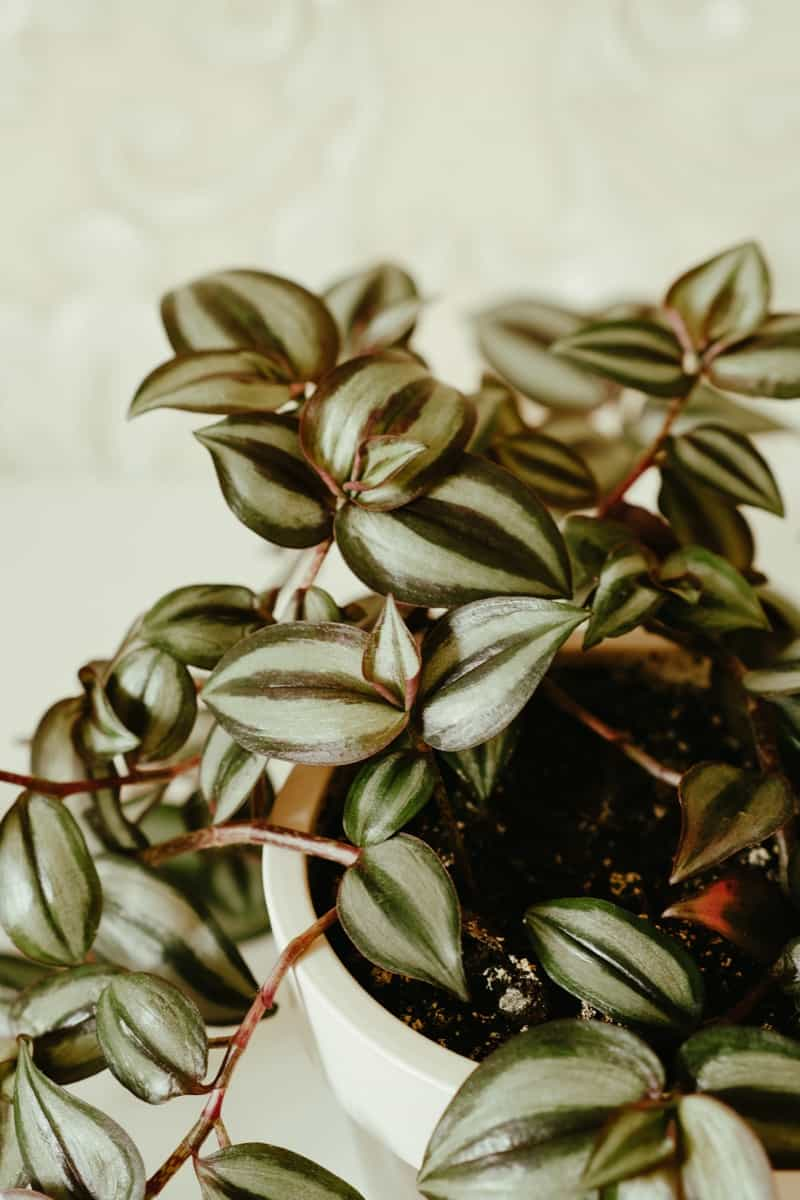
Watering and Humidity Needs
Wandering jew plants should be watered regularly, especially during the growing season (spring and summer). The soil should be well-drained and never allowed to dry out completely or become waterlogged. Wandering jew plants also prefers high humidity, so misting them occasionally placing them near a humidifier can help them stay healthy.
Soil Requirements
Wandering jew plants are not very fussy about the soil they grow in, as long as it is well-drained and rich in organic matter. A general-purpose potting mix with added perlite/ vermiculite can work well for them. They can also grow in soilless media such as peat moss, coco coir, or sphagnum moss.
Temperature and Climate Requirements
Wandering jew plants are tropical plants that like warm temperatures around 50–80 °F (10–27 °C). They can tolerate cooler temperatures to 40 °F (4 °C), but they will stop growing and may lose some leaves. They cannot survive frost or freezing temperatures, so they should be brought indoors or protected during winter.
Propagation and Repotting
Wandering jew plants are very easy to propagate by stem cuttings. Cut a stem with at least one node and place it in water or moist soil. It will root within 1-2 weeks and start growing new leaves. You can also divide an established plant by cutting it into smaller sections and potting them separately. Wandering jew plants do not need to be repotted very often, as they like to be slightly root-bound. However, if they become too crowded or their soil becomes depleted, you can repot them in spring or summer using a somewhat larger container with fresh potting mix.
Pests and Diseases
Wandering jew plants are generally pest-resistant, but they may attract spider mites, aphids, mealybugs, or scale insects if they are stressed or under-watered. These pests can be controlled by washing them off with water, wiping them off with alcohol-soaked cotton swabs, or spraying them with insecticidal soap or neem oil.
Wandering jew plants are also susceptible to fungal diseases such as leaf spots or botrytis if they are over-watered or have poor air circulation. These diseases can cause brown spots, yellowing, wilting, or rotting of the leaves and stems. To prevent them, avoid splashing water on the leaves, remove any dead or diseased plant parts, and improve ventilation around the plant.
Propagation and Maintenance
Propagation of the Wandering Jew is straightforward. Stem tip cuttings, about 3-6 inches long, can be rooted in soil or water. Remove the leaves from the bottom half of the cutting, and if desired, dip the cut end in the rooting hormone to accelerate root development. Then, place the cutting in moist soil or water, and the roots should develop within a few weeks.
In case you missed it: New Paddy Varieties in India: High-Yielding, Disease-Resistant, and Aromatic Rice Cultivars
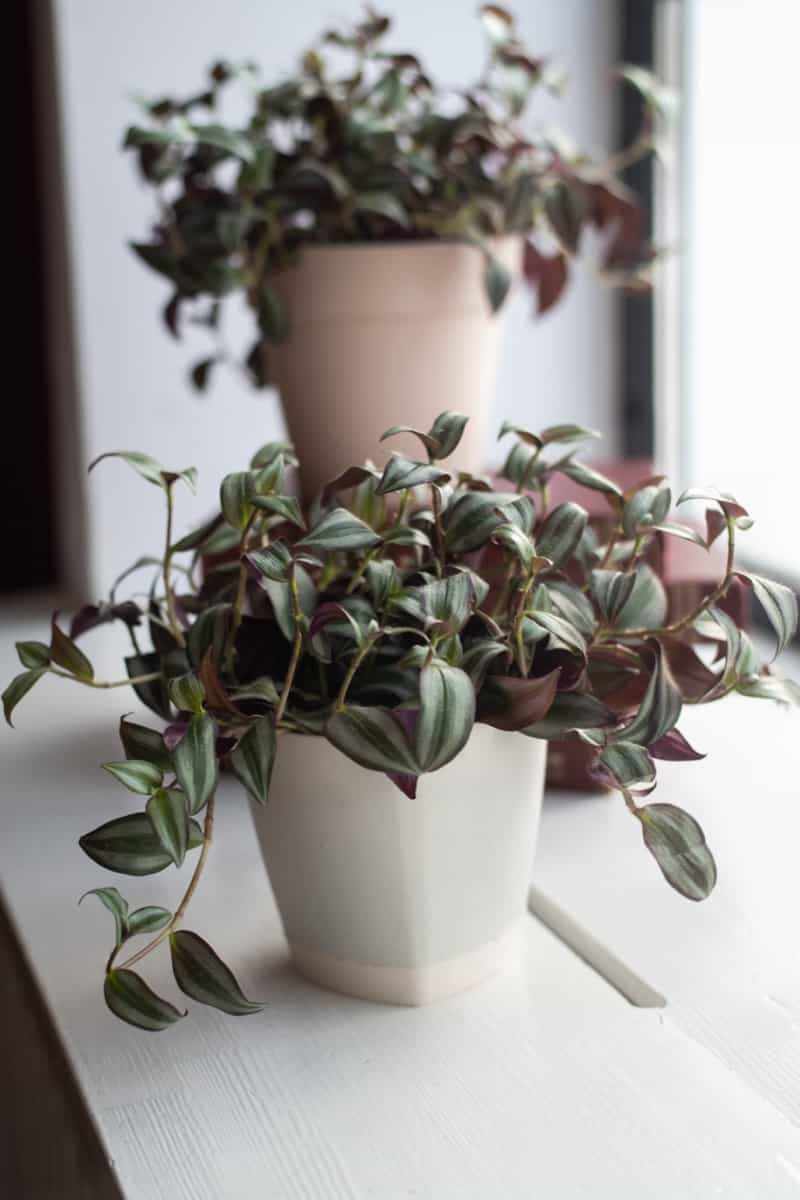
Regular pruning helps maintain a bushy and attractive appearance, as the plant can become leggy with age. Pinch back the stems to encourage branching and fuller growth. Repotting should be done every 1-2 years to refresh the soil and provide room for development.
Wandering Jew (Tradescantia) Plant Care
Light Requirements
Inch Plants favor bright, indirect light but can tolerate a few hours of direct sunlight. A south-facing window offering 6 to 7 hours of indirect light daily is ideal. Growing them in north-facing locations can also yield good results. However, if you notice fading colors or reduced variegation on the leaves, this is a sign of insufficient light. In such cases, moving the plant to a brighter location is necessary to restore its vibrant appearance.
Watering Practices
Maintaining a uniformly moist, but not waterlogged, potting mix is crucial. Under indirect light, watering weekly or when the topsoil feels dry is recommended. It’s important to avoid letting the soil dry out. When watering, do so incrementally to ensure the soil absorbs moisture effectively. This method prevents water from simply running through the planter without hydrating the soil properly. Wait between waterings for the soil to soak up before adding more until water drains from the bottom.
Soil Composition
Inch Plants are adaptable to various soil types, but they flourish best in well-draining, rich potting mixes. The soil should be allowed to dry slightly between waterings and aerated periodically to prevent compaction. This approach helps maintain the necessary moisture level without risking root rot, a common issue in overly wet conditions.
Fertilization Strategy
These plants are moderate feeders and respond well to balanced, general houseplant fertilizers. A bi-weekly application, alternating between root and foliar feeding, promotes healthier, more robust growth. Products like Ugaoo Plant Tonic or diluted NPK fertilizers are suitable. Root application directly nourishes the plant, while foliar feeding encourages larger, more ornamental leaves.
Fertilization
Stem cuttings can be used to propagate a Wandering Jew plant from a healthy mother plant. Section the stem into segments measuring 1 to 2 inches in length, ensuring that each segment contains at least one leaf node. The cuttings may be rooted in water prior to being planted in saturated potting soil or planted directly in that. Wait for the cuttings to develop roots while maintaining them in a bright area with indirect light. Whether this occurs within two to fourteen days depends on the variety.
They can be transplanted in larger containers containing well-draining soil when the roots reach a length of about an inch. Bright, indirect sunlight and mild temperatures ranging from 50°F to 85°F are ideal conditions for Wandering Jew plants. Although they can tolerate some morning and evening direct sunlight, excessive sunlight will cause their foliage to become scorched or diminish in color.
In case you missed it: Cost of Farming Per Acre in India: Calculator for State-wise Cultivation Input Cost Per Acre
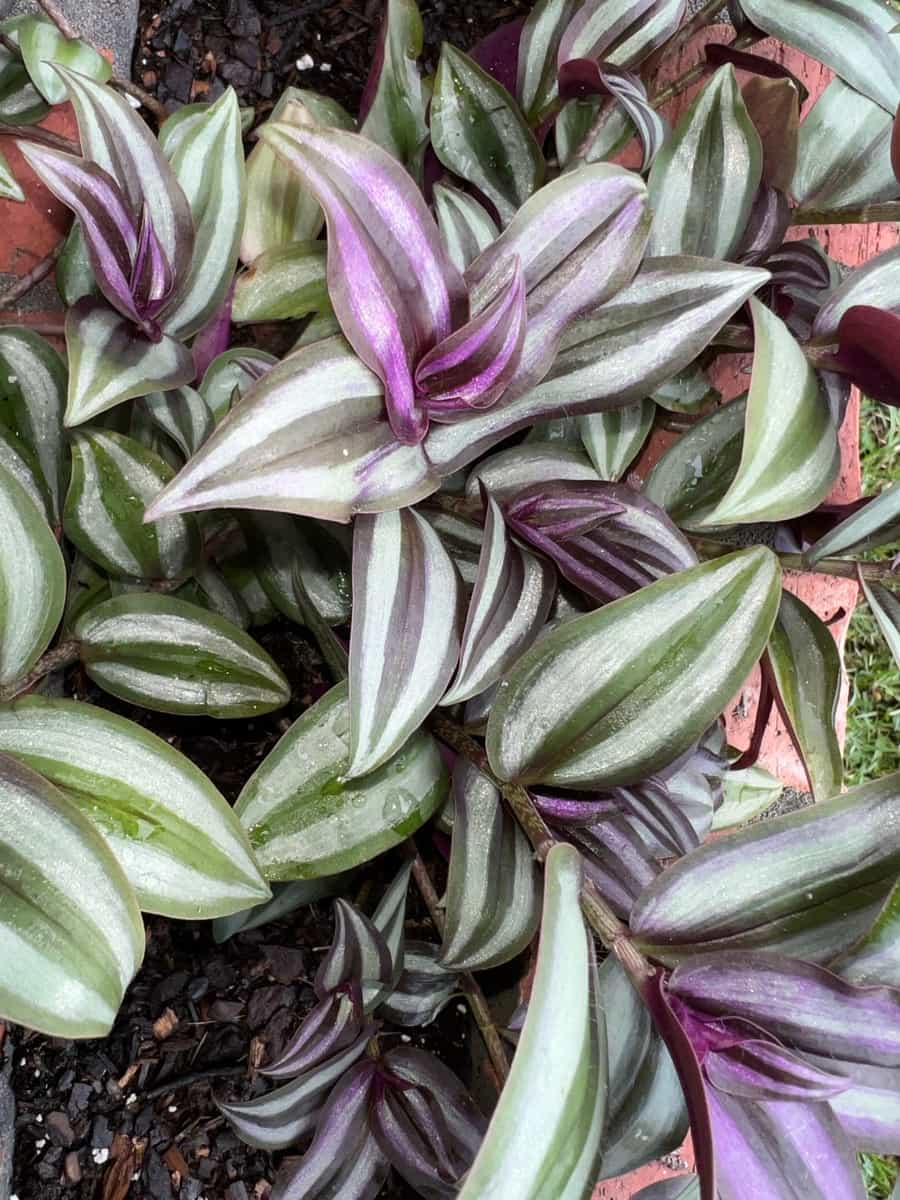
Additionally, they favor high humidity; therefore, you can moisten them frequently or position them near a humidifier or a tray of pebbles submerged in water. Avoid overwatering/ allowing the soil to become damp when the top soil becomes dried before watering your Wandering Jew plant. Fertilize your Wandering Jew plant with a half-strength liquid fertilizer once in month during the spring and summer. Wandering Jew plants are generally easy to care for, but they may face some common problems, such as spider mites, aphids, leaf spots, or botrytis.
To prevent these pests and diseases, keep your plant clean and healthy, inspect it regularly for signs of infestation or infection, and treat it with insecticidal soap or fungicide if needed. Additionally, you can maintain the form of your Wandering Jew plant by pruning it and removing any damaged or diseased leaves or stems. In order to promote bushier growth on a spindly or sparse plant, bend back the ends of the stems.
Although Wandering Jew plants do not require a great deal of fertilizer, they may benefit from supplemental nutrients while they are actively developing. From spring to summer, balanced liquid fertilizer diluted to half strength may be applied once per month. Alternatively, at the onset of spring, you may apply a slow-release granular fertilizer in accordance with the instructions on the package.
Winter is an inappropriate time to fertilize your Wandering Jew plant, as it enters a dormant phase during which it requires minimal nourishment. Wandering Jew plants can be grown together with other plants that have similar growing requirements and complement their appearance.
- Coleus: These plants have colorful foliage that can match or contrast with the Wandering Jew’s leaves. They also like bright, indirect light and moist soil.
- Creeping Jenny: These plants have trailing stems with small yellow flowers that can create a nice contrast with the Wandering Jew’s purple or green leaves. They also like moist soil and partial shade.
- Begonia: These plants have showy flowers that can add some color and texture to your Wandering Jew plant. They also like bright, indirect light and well-drained soil.
- Impatiens: These plants have delicate flowers that can create a soft look with your Wandering Jew plant. They also like moist soil and partial shade.
In case you missed it: The Growing Trend of Urban Terrace Gardening in India for Healthy Living and Sustainability
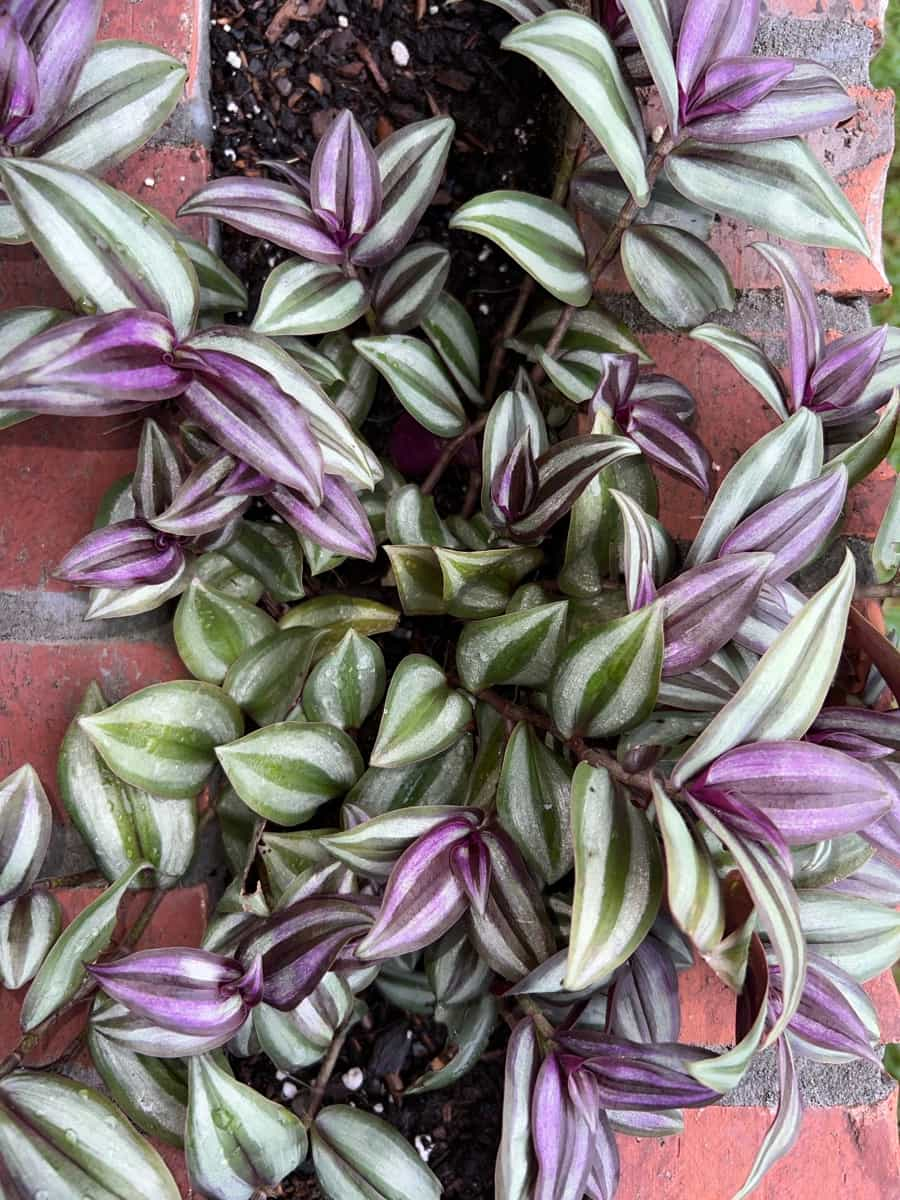
Conclusion
The Wandering Jew Plant, with its vibrant foliage and easy propagation, is a delightful addition to any home. By providing bright, indirect light, consistent moisture, well-draining soil, and moderate fertilization, you can ensure its robust growth and captivating beauty, making it a perfect choice for plant enthusiasts.
- Types of Pesticides Used in Agriculture: A Beginner’s Guide
- Economical Aquaculture: A Guide to Low-Budget Fish Farming
- 15 Common Planting Errors That Can Doom Your Fruit Trees
- How to Make Houseplants Bushy: Effective Tips and Ideas
- Innovative Strategies for Boosting Coconut Pollination and Yield
- Pollination Strategies for Maximum Pumpkin Yield
- The Complete Guide to Chicken Fattening: Strategies for Maximum Growth
- Natural Solutions for Tulip Problems: 100% Effective Remedies for Leaf and Bulb-Related Issues
- Revolutionizing Citrus Preservation: Towards a Healthier, Greener Future
- Natural Solutions for Peony Leaf and Flower Problems: 100% Effective Remedies
- Maximizing Profits with Avocado Contract Farming in India: A Comprehensive Guide
- Natural Solutions for Hydrangea Problems: 100% Effective Remedies for Leaf and Flowers
- The Ultimate Guide to Choosing the Perfect Foliage Friend: Bringing Life Indoors
- From Sunlight to Sustainability: 15 Ways to Use Solar Technology in Agriculture
- The Ultimate Guide to Dong Tao Chicken: Exploring from History to Raising
- The Eco-Friendly Makeover: How to Convert Your Unused Swimming Pool into a Fish Pond
- Mastering the Art of Delaware Chicken Farming: Essentials for Healthy Backyard Flocks
- 20 Best Homemade Fertilizers for Money Plant: DIY Recipes and Application Methods
- How to Craft a Comprehensive Free-Range Chicken Farming Business Plan
- Brighten Your Flock: Raising Easter Egger Chickens for Beauty and Bounty
- How to Optimize Your Poultry Egg Farm Business Plan with These Strategies
- Subsidy for Spirulina Cultivation: How Indian Government Schemes Encouraging Spirulina Farmers
- Ultimate Guide to Raising Dominique Chickens: Breeding, Feeding, Egg-Production, and Care
- Mastering the Art of Raising Jersey Giant Chickens: Care, Feeding, and More
- Ultimate Guide to Raising Legbar Chickens: Breeding, Farming Practices, Diet, Egg-Production
- How to Raise Welsummer Chickens: A Comprehensive Guide for Beginners
- How to Protect Indoor Plants in Winter: A Comprehensive Guide
- Ultimate Guide to Grow Bag Gardening: Tips, Tricks, and Planting Ideas for Urban Gardeners
- Guide to Lotus Cultivation: How to Propagate, Plant, Grow, Care, Cost, and Profit
- Agriculture Drone Subsidy Scheme: Government Kisan Subsidy, License, and How to Apply Online
- Ultimate Guide to Raising Araucana Chickens: Breed Profile, Farming Economics, Diet, and Care
- Bringing Hydroponics to Classroom: Importance, Benefits of Learning for School Students
- Ultimate Guide to Raising Polish Chickens: Breed Profile, Farming Economics, Diet, and Care
- Ultimate Guide to Raising Australorp Chickens: Profile, Farming Economics, Egg Production, Diet, and Care
- Silkie Chicken Farming: Raising Practices, Varieties, Egg Production, Diet, and Care
- Sussex Chicken Farming: Raising Practices, Varieties, Egg Production, Diet and Care